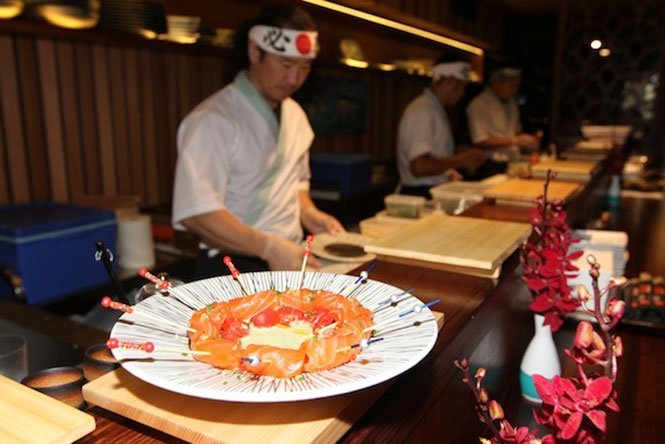Chef of Sydney Japanese restaurant, Niji Restaurant & Bar, Daigo Kani gives us the expert tips on how to make sashimi. From preparing the fish to choosing the right ingredients find out how to master the notoriously difficult Japanese favourite.
Is good sashimi difficult to make for the average home cook?
Daigo Kani: It is possible to make sashimi at home but there is a certain amount of skill involved, especially when using the knife to prepare the fish. Ideally, a whole fish will be used which requires a large workspace and wide cutting board. However, as long as the fish is fresh and handled properly, filleted fish can serve as an alternative. A sharp sashimi knife (yanagi) is essential for making really good sashimi.
What fish works best for sashimi?
Daigo Kani: High quality tuna is the best fish for sashimi but salmon, kingfish and snapper also work well.
How can you be sure a fish is sashimi-grade?
Daigo Kani: Check if the fish eye is clear and pupil is black and the gills of the fish should be a rich red colour and clean. The skin of the fish should be metallic and clean – do not use a fish if the skin appears dull or has discoloured patches on it. A fresh fish should smell like fresh, clean water, or even give off a smell not dissimilar to cucumbers.
For fish fillets, all fish fade as they age. It should also have no pungent aromas when you smell it. If there is liquid on the fillet, it should be clear, not milky. Milky liquid on a fillet is the first stage of rot. Press the fish meat with your finger if it is possible as it should be resilient enough so your indentation to disappear.
What method do you use to make sashimi?
Daigo Kani: Cut off the head and tail, and then make the fillet. You can trim the fillet into a one to two-inch wide by a half to one-inch high fillet. Each piece of the sashimi will be around 15g-16g.
Make sure there is no bone in the sashimi, use a pluck to pick it out if necessary.
What are some ingredients that go well with it?
Daigo Kani: As a garnish, Daikon-tsuma (grated bits of daikon radish), shiso leaf, wasabi and soy are a good match. Gari (pickled ginger) is usually consumed between different sashimi or sushi dishes to cleanse the palate.
What are some side dishes you can serve with sashimi?
Daigo Kani: For appetizer, edamame and oyster is a good choice. After the sashimi, a few pieces of nigiri would be great and sake is considered a necessity for all Japanese food!
Daigo Kani’s Top Six Tips for Making Sashimi Safely at Home
1. Choose a good fish, make sure it is as fresh as possible
2. Keep the raw fish in the fridge right up to the point when you are about to prepare it
3. Use a sharp knife
4. Focus on the cutting with nice angle, a good knife sill is important
5. Work quickly and return the fish to the fridge immediately once it is cut. Consume it within 4 hours.
6. Practice is important to get the experience and don’t be afraid to challenge yourself!
Image credit: How to Make Sashimi image supplied by Niji Restaurant & Bar Double Bay




















